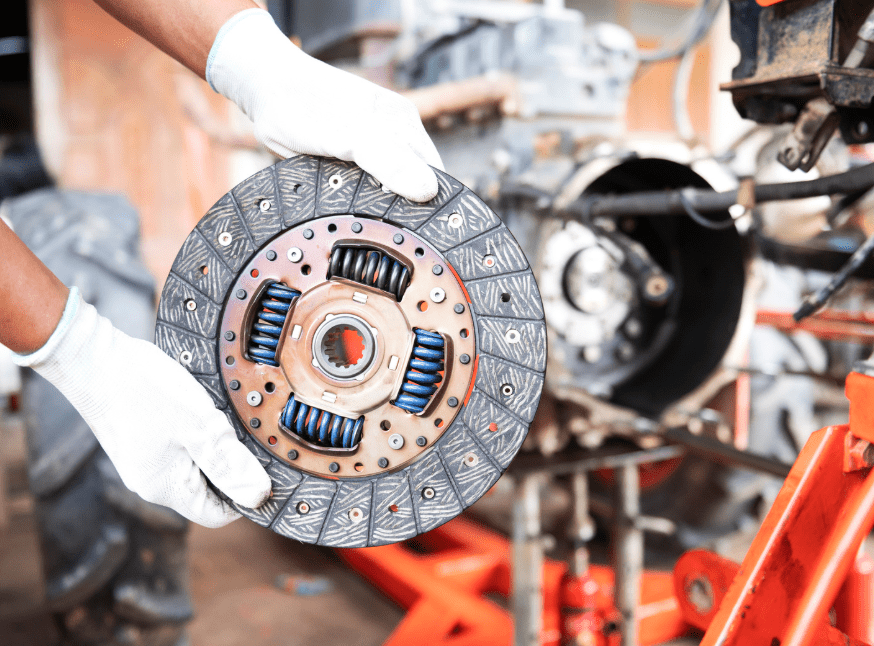How to Avoid Wearing out Your Clutch?
Your clutch is the component you press down with your foot to transition between gears in a manual transmission vehicle. Yet most drivers pay little attention to the clutch until it begins to slip, stutter, or fail altogether.
But have no fear, for with a basic understanding of how a clutch operates and a few clutch-friendly driving habits, you can significantly extend the life of your clutch – we’re talking over 60,000 miles rather than less than 30,000.
Clutch Basics
A quick clutch refresher course: the clutch disk sits between the engine and transmission. When you push the clutch pedal in, the disk disengages from the flywheel, allowing you to shift gears. When you release the pedal, the disk re-engages with the flywheel and power flows back to the wheels. This rubbing action produces friction, creating heat and inevitably wearing the disk material over time.
The level of wear depends on how and where you drive – stop-and-go city driving is tougher on a clutch than motorway cruising. If you have a used car with high mileage – or an old car with the original clutch – you are more likely to have problems.
The good news? We can test and inspect your clutch during routine servicing, helping catch any problems before they cost you.
With all that said, do these things to avoid wearing out your clutch:
5 Tips to Avoid Excessive Clutch Wear
Tip 1 – Don’t ride the clutch pedal
Easing onto the clutch pedal during starts and keeping it part pressed while driving seems harmless. But riding the pedal creates unnecessary friction between the clutch disk and flywheel, accelerating wear. For the smoothest, most clutch-friendly starts, simply press the pedal swiftly through its entire range of motion when starting from a stop.
Tip 2 – Use your handbrake
Pull up to a stop sign and leave the transmission in gear with the clutch pedal pressed, allowing the gear to hold the car stationary. Seems reasonable, but it forces the clutch to slip the entire time you’re idling at that stop sign, shop window, or red light.
Instead, shift to neutral and activate your handbrake anytime you expect to sit at a stop for more than a few seconds. This relieves the load on the clutch and eliminates needless wear.

Tip 3 – Change gear quickly and smoothly
Driving aggressively and trying to achieve sub-3 second 0-60 times? That’s a recipe for premature clutch problems. High-performance clutches can handle the abuse, but sliding the gear stick lazily from gear-to-gear places undue strain on the clutch as it fruitlessly tries to match the input shaft speed to the output shaft speed without fully engaging.
Instead, train yourself to lift off the accelerator decisively, press the clutch swiftly to the floor, move the shifter positively into the next gate, and smoothly engage the clutch.
Tip 4 – Minimise partial clutch engagement
Whether easing away from a stop or attempting a perfectly-rev-matched downshift for fun, that momentary clutch slip puts wear on the disk and the pressure plate and flywheel, which could lead to costly repairs.
Avoid partial engagement and the associated slip time by fully engaging or disengaging the clutch.
Tip 5 – Don’t burn out the clutch on slippery Surfaces
It happens to every driver – you’re stuck in the snow or ice and fruitlessly spinning your wheels trying to get moving. So, you start riding the clutch pedal to get more traction. But this technique puts excessive wear on the clutch components without significantly helping to get unstuck – all it does is heat the clutch beyond tolerance.
Instead, shift into second gear and gently apply a steady throttle. If that fails to provide momentum, clear snow away from the tyres if possible. Pour sand or cat litter under the wheels for added traction.
Signs of a healthy clutch
When pressing a clutch pedal in good working order, you should feel some steady resistance through its full range of motion. A properly working clutch requires a precise amount of force to disengage. Too light or too stiff of a pedal indicates issues.
Also, listen and feel as the pedal returns to its upper position once released. The pedal should quickly spring off the floorboard when your foot comes off it. This rapid return indicates proper disengagement and release of the pressure plate.
If the pedal instead lazily resumes its position, feels spongy, or stays partially depressed on the floor, hydraulic troubles or mechanical problems are likely brewing. Delayed clutch release will lead to early wear through excessive slip time.
Signs your clutch has problems
If you haven’t exercised clutch-preserving habits and start noticing changes in clutch operation, don’t ignore the signs of impending failure—clutches telegraph problems well before they leave you stranded at an inopportune time.
One sign is when the clutch starts to slip – this happens when you are accelerating steadily, and the engine suddenly spikes in RPM without a corresponding increase in vehicle speed.
Another symptom is when the clutch won’t fully engage. You depress the pedal, but the clutch still slips when pulling away from a stop – this indicates the worn disk material is preventing solid contact with the flywheel.
You may also experience clutch drag, where you entirely release the pedal but still feel resistance in the drivetrain. Warping of components from heat stress can cause this issue.
Listen for a clutch squeal, a high-pitched squealing noise when the clutch is engaged – this points to a worn pilot bearing or problems with the input shaft.
Clutch vibrations can also signal issues. If you notice pedal pulsations or driveline vibrations, it likely indicates warped disks or flywheel.
Any of these symptoms means it’s time to have your vehicle inspected by a professional technician. Book it into a local (and reputable) garage soon. And if your clutch won’t engage or disengage, it’s better to get towed to a garage rather than risk additional wear.


